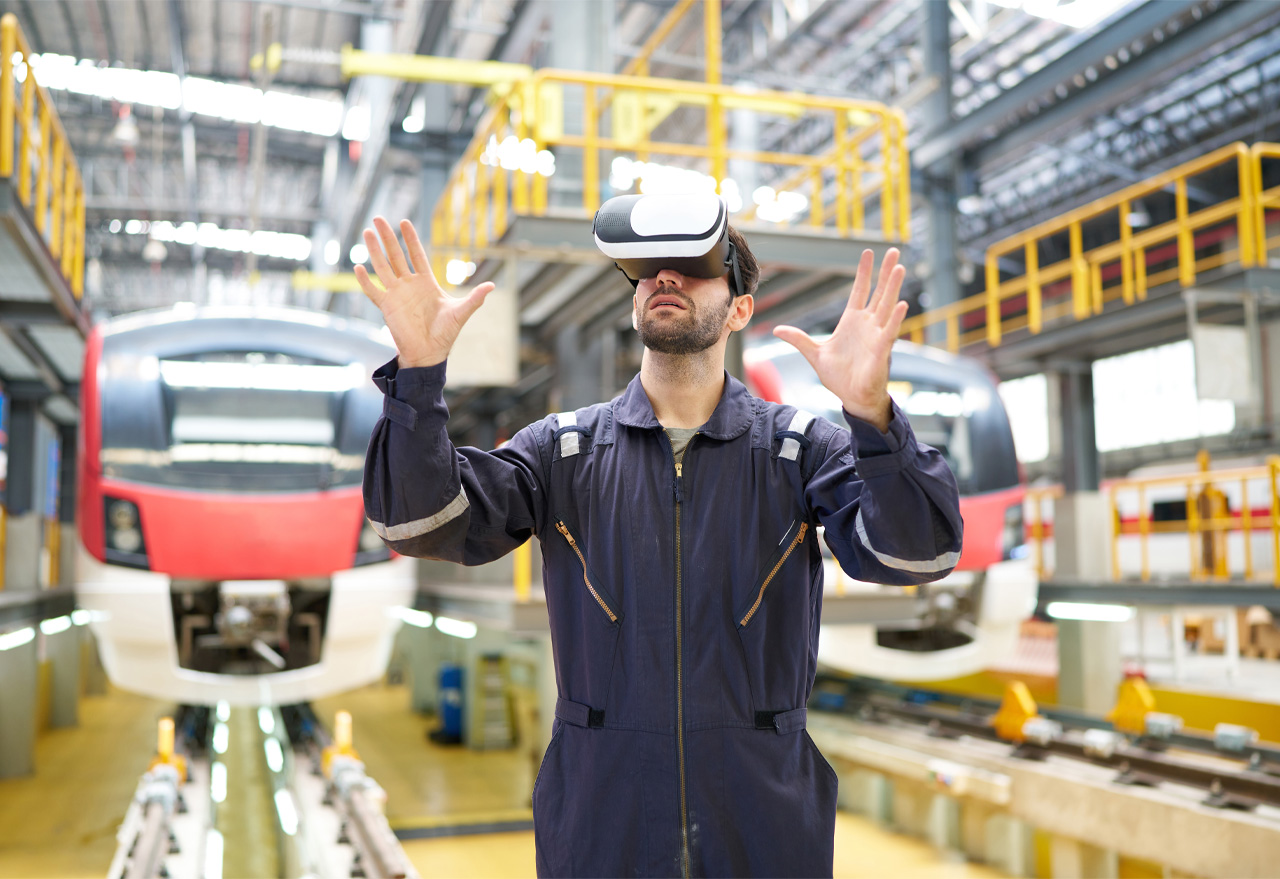For any business, delivering training and maintenance programmes requires investment, both in terms of time and money. We take a closer look at how remote Augmented Reality (AR) can be applied to improve the efficiency and effectiveness of these areas.
What Is Remote Augmented Reality?
AR involves overlaying valuable digital information on a real-world environment through a mobile device, tablet or smart glasses. Applications might include placing an interactive 3D model of a machine component into a room or projecting step-by-step maintenance instructions onto a car’s engine.
The remote component combines live video streaming with AR, which allows for computer-generated images to be placed in a user’s field of view in real-time. Within a manufacturing plant, for example, experienced technicians are often required to be physically present to support frontline employees in completing certain tasks. However, with the capabilities of remote AR, experts can be located off-site yet still assist those on the frontline as if they were there in person.
Transforming Training Using Remote AR
A large percentage of corporate training takes place in centralised classrooms or through on-the-job shadowing. Both of these methods can be a drain on internal resources and do not always suit particular learning styles, such as those who prefer more kinaesthetic approaches.
AR is revolutionising the field of training and education by creating on-demand or in-context experiential learning experiences that cut training times, improve knowledge retention and close the skills gap.
Rather than gathering in training rooms or huddling around a piece of machinery, employees instead access AR-enabled training tools via their mobile devices. Through these tools, they can visualise products or equipment in three dimensions, practice and simulate key processes and procedures in a safe environment and test their competency through gamified elements. When external support is required, remote assistance can be integrated to give trainees access to the experts who can then guide them through the necessary steps and transfer additional knowledge.
Summary of the Benefits:
- Cuts training times
- Improves knowledge retention
- Reduces training costs
- Closes the skills gap quickly
Improving the Efficiency of Maintenance with Remote AR
Beyond the training room, AR can add value to ongoing processes that are critical to a business’s continuity and success. Paper-based checklists and printed manuals are becoming outdated and can create unnecessary challenges when it comes to completing routine or unexpected maintenance.
With the introduction of AR smart glasses, step-by-step sequences and live data can be overlaid in real-time onto machinery, whilst allowing the staff member to keep both hands free. New or inexperienced employees can then confidently and safely complete the necessary process without requiring extensive periods of training, on-the-floor shadowing, or in-person support. This also helps to reduce the chances of human error and to avoid periods of prolonged downtime.
The remote assistance tool can instantly connect technical experts to frontline employees in the field through a live video feed. This means the experts can provide over-the-shoulder support and add digital annotations in AR to assist with complex or unexpected problems as they arise. As well as reducing travel costs for experts, it increases the accessibility of the necessary skills required.
For businesses that offer post-sales technical support, AR-enabled remote assistance can also be applied to guide customers through self-service procedures. This is the next best thing to the technician and the customer standing side-by-side, reducing repair times and boosting customer satisfaction.
Summary of the Benefits:
- Reduces travel costs of experts
- Reduces the likelihood of human error
- Increases scalability and accessibility of expertise
- Helps to quickly solve complex or unexpected challenges





